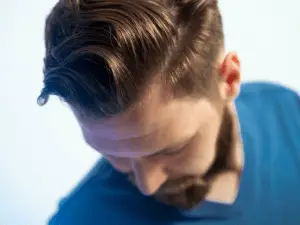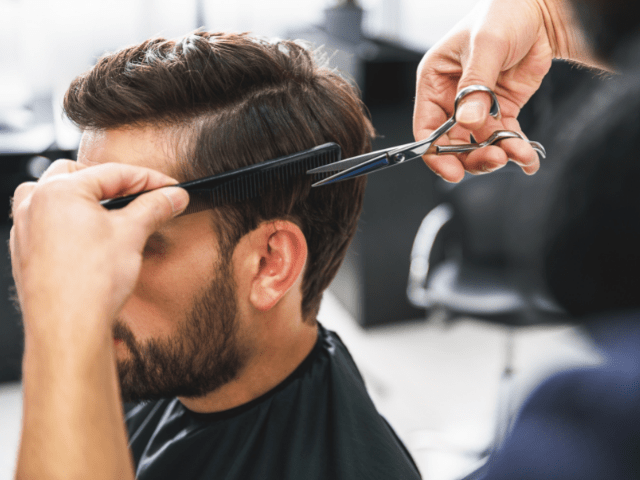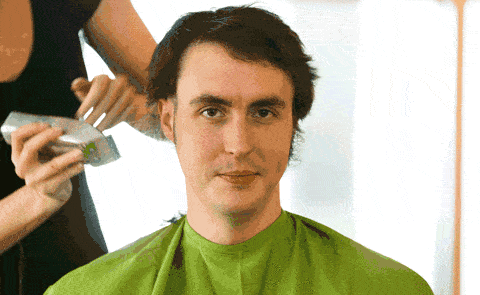When you don't know how to describe a haircut, a barber may mess up your hair.
Truth is...
Sometimes, you may know what you want but lack the words to describe the hairstyle. At other times, you may describe it correctly, but your barber misunderstands it.
It's even worse when you have no photo to show your barber.
Now, it's time to learn how to ask for a haircut correctly.
Page Contents
What Influences Your Haircut Choices?

Two people can visit the same barber, get the same haircut, but still look different. So many factors control this outcome, and they include your hair texture, hair density, the shape of your head, plus how you describe a haircut.
Before we discuss how to tell a barber what you want, which factors should influence the haircut you choose?
Let’s get started knowing now...
Your Morning Routine
Some hairstyles, especially the ones with uneven hair length, are demanding. Therefore, let your barber know if you're not a morning person and you'd prefer a hairstyle with little to no morning haircare routine.
For instance, a high fade needs regular trimming on the sides and the back to maintain a fade haircut. You'd also need a shape-up for the 360 waves wolfing method.
Your Hairstyling Skills
Also, if you have no styling skills, you're better off with a hairstyle that needs basic combing skills. On the other hand, when you go for 360 waves, you'll brush your hair up to 15 times a day.
Even a fade may be tasking if it's combined with a quiff as you have to apply pomade, then tease the hair until it takes the shape you like.
Your Career
Your barber may also style you according to your career demands. Casual looks like tapered locs are too informal for a corporate job, but they're perfect for an artist or a rapper.
Your Fitness Regime

Remember, too much wetting and drying can cause hygral fatigue as moisture penetrates the hair shaft and causes frizz.
Here's What To Ask For At The Barbers
After selecting a haircut that suits all factors we've listed above, here are tips to help you know what to ask for at the barbers.
Describe The Hairstyle
It doesn't matter whether you'll describe it with gestures or illustrations on a piece of paper; try as much as possible. Alternatively, get a photo of the haircut on the Web and share it with your barber. Your description guides your barber to give you suggestions using the actual names of the haircuts.
For example, a tapered haircut is one of the most diverse looks your barber can pull off, as there are dozens of tapered haircuts. Your barber will ask you whether you want it high or low, a faux hawk with a fade...
One, you can describe it easily by the amount of hair to leave on the back of your head. For example, do you want your barber to trim hair close to the skin at the nape and increase hair length gradually toward your crown? That is a tapered fade.
Also, do you want your barber to trim and taper a few inches at the back and sides or higher?
To learn how to describe a haircut...
Learn Haircut Terminology
For example, differentiate between a taper and a fade. The former has hair length increasing gradually from the nape, while the latter refers to a trim that cuts close to the skin. Learn the names of a few more styles you like.
Differentiate Hair Trimmer Lengths
You can also learn about trimmer guard sizes, usually indicated in numbers to represent the size in inches or millimeters. These guard sizes determine the trim length for various haircuts.
For instance, Number 1 cuts about 1/8 inches of hair off, and Number 8 trims about 1 inch. You'll know the probable length of the haircut you're asking for when you know clipper guard sizes.
Discover Hairstyling Techniques And Products
You'll use pomade for sleek 360s but best gel for dreadlocks to lay down stray hairs when you twist your locs. The bristles of brushes differ too, as the hard ones suit thick, long hair better than soft brushes.
When you know such styling products, you'll have a better conversation with your barber about the best style for your hair.
Research
Another factor that'll help you describe a haircut is research. When you get creative and imagine a hairstyle that suits you, find a picture that explains it. Next, share that photo with your barber to get feedback immediately if the style doesn't suit your face or hair.
FAQs On What To Ask For At The Barbers
Do Barbers Know What Haircut Fits You?
Yes, they do. However, it must be a barber that has worked on your hair long enough to know the styles you like, your personality, and other factors that determine the best look. Also, such a barber knows the features you prefer to hide or highlight.
Since barbers keep up with trends in the industry, they know more about trendy styles and the best products for them. They have more information than you'd get from reading one hair magazine only. It's better to have your barber suggest the best haircut for you.
Learn how to talk to your barber with this video:
Why Do You Need To Learn Haircut Lingo?
You're able to explain the haircut you want better when you use your barber's lingo. Furthermore, knowing these terms will help you when searching for pictures of haircuts or scrolling through hair blogs.
How Do You Tell A Barber What You Want?
We've looked at how to describe a haircut in the section above. That's the best way to explain what you want, plus you can use a picture to bring out all the features you like in the haircut. You can get as creative as possible when describing a haircut. For instance, to set the length, use your fingers to show the approximate hair length to trim. Also, point out sections of your hair where to cut or leave out.
Final Thoughts
Do your homework. Gather pictures and read articles about hairstyles to know different haircuts. Since one hairstyle may have many variations, style pictures show the minor differences in them.
Secondly, learn hair terms. It makes it easier, for example, to say you want a high fade instead of saying you want to trim all your hair at the back and leave the crown.
Thirdly, ask your barber for advice on the most appropriate style for your face. You may ask for a haircut, but is it the best for you?



